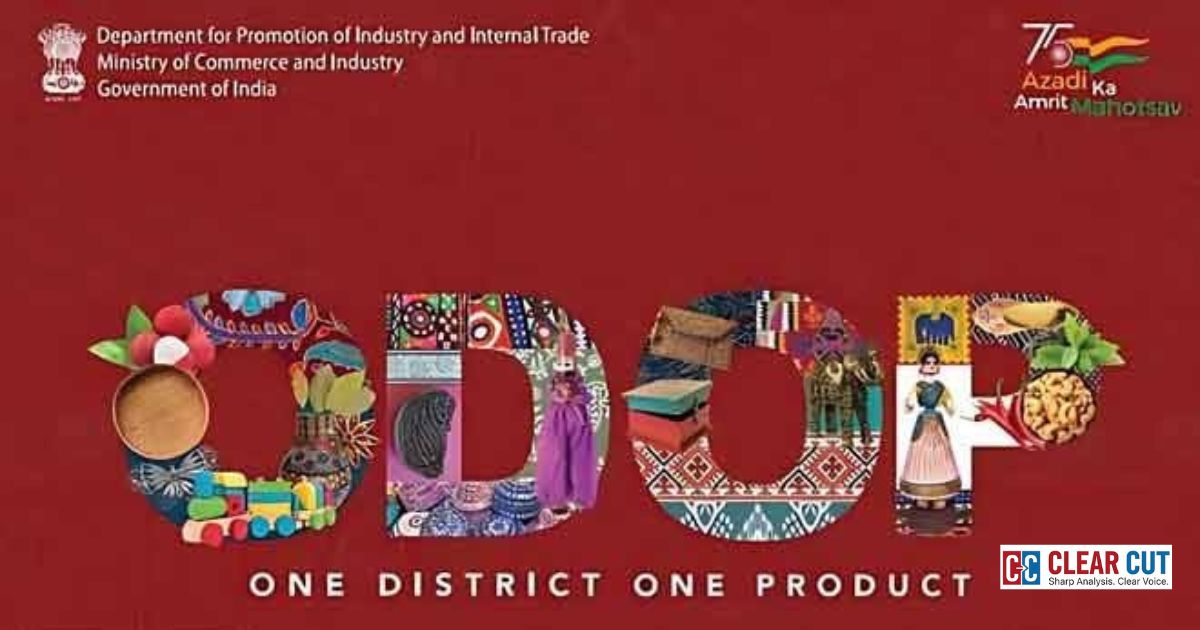ODOP | Photo Credit: commerce.gov.in
Clear Cut Livelihood Desk
New Delhi, UPDATED: Sep 09, 2025 03:45 IST
Written By: Janmojaya Barik
In the dusty lanes of Bastar, a Dokra artisan carefully shapes molten metal into intricate tribal figurines as it’s an art form his ancestors have practiced for centuries for survival and to keep the art form alive for all years, such crafts now struggles to find buyers beyond the local haat (market). Today, thanks to the One District One Product (ODOP) initiative and the hands-on support of district magistrates, these forgotten traditions are stepping into global markets. Government sponsored exhibitions, digital platforms, and credit schemes are not only reviving tribal handicrafts but also restoring dignity and livelihoods to thousands of artisan families across India.
How Government Leadership and District Magistrates Drive ODOP’s Success
The success of ODOP lies not only in preserving heritage but also in the determined push from government leadership to preserve what remains of these art forms as art represents a culture. What began in the State of Uttar Pradesh has now grown into a national model under the Ministry of Commerce and Industry which aligns seamlessly with the vision of Atma nirbhar Bharat. Across districts, district magistrates have emerged as the true champions of the mission who are responsible in personally identifying flagship products, coordinating with artisan clusters, and providing them access to training, finance, and marketing. From organizing local exhibitions to helping linking tribal cooperatives with e-commerce platforms and promoting Digital India Initiative, their role has been pivotal in turning ODOP from a policy idea into a ground reality. It is this strong partnership between policy at the top and proactive administration on the ground that is breathing new life into India’s tribal and local handicrafts.
Bastar’s Dokra, Odisha’s Saura, and Jharkhand’s Sohrai–Khovar: Tribal Arts Reclaim the Spotlight
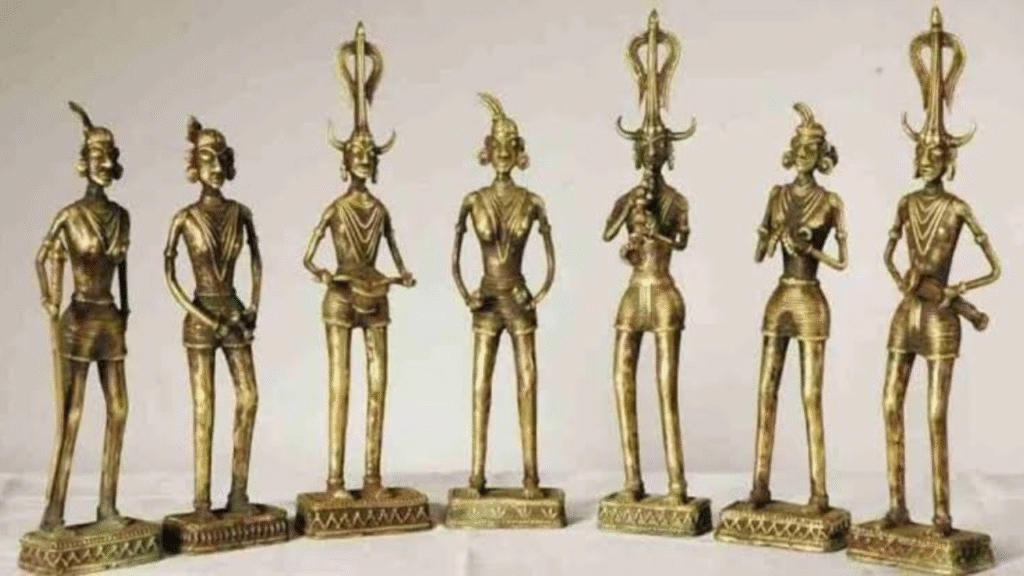
Tribal Saura Art | Photo Credit: artisancrest.in
Take Bastar in Chhattisgarh where the centuries-old Dokra metal craft was on the verge of decline. With ODOP support and recognition, the district administration stepped in to organise craft fairs and provide artisans with design workshops to help them facilitate access to online platforms. Today, Bastar’s Dokra figurines are not only sold in Delhi’s craft expos but have also found buyers in Europe and the US and contribute humbly to our economy.

(Tribal Saura Art | Photo Credit: artisancrest.in)
Similarly, in Odisha’s Rayagada and Gajapati districts, the traditional Saura paintings which once confined to tribal homes and rituals have gained new visibility due to ODOP. The district magistrates have worked closely with self-help groups to make sure that these paintings are promoted under ODOP branding and showcased at national exhibitions.
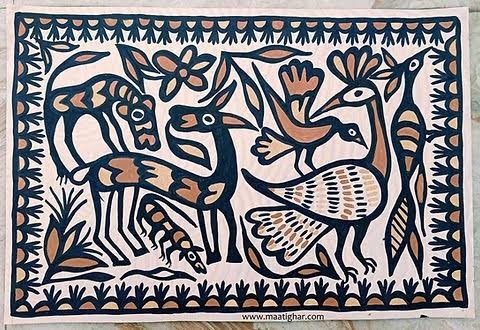
(Sohrai Painting| Photo Credit: insightsonindia.in)
In Jharkhand, the vibrant Sohrai and Khovar paintings which are largely practiced by tribal women are being revived through ODOP. With direct government support women artisans have been trained to digitise their designs and market them on e-commerce platforms where they will get interested buyers . For many of these women it is the first time their art has translated into a sustainable income and brought a smile to their face.
These examples underline how ODOP is not just about one product per district but also about empowering communities, especially tribal artisans, by connecting them with policy, markets, and technology.
Market Access, Quality Standards, and Logistical Barriers
Yet the journey of reviving tribal handicrafts under ODOP has not been without hurdles. Artisans who often struggle with limited market access, low wages, and exploitation by middlemen are left with little room for sustainable income. Quality standardization and certification remain critical challenges particularly when competing in international markets where quality matters. Logistical issues also pose a bottleneck; remote tribal districts often lack smooth supply chains to carry crafts to urban or global buyers due to difficult terrains and predictable delays.
Recognising these gaps the government and district administrations have stepped up with common facility center skill training programs and credit support schemes. Initiatives such as the Pradhan Mantri Formalisation of Micro Food Processing Enterprises (PMFME) scheme and TRIFED’s Van Dhan Vikas Kendras are providing both infrastructure and capacity-building support. District magistrates have played a proactive role here in bridging artisans with banks for microcredit by linking them to e-commerce platforms and setting up district-level ODOP help desks. These interventions are slowly dismantling systemic barriers but also ensuring that tribal craftspeople earn fair value for their work while keeping traditions alive.
ODOP on Amazon Karigar, Flipkart Samarth, and International Trade Fairs

(Amazon Karigar Logo | Photo Credit: Amazon.in)
A major leap for ODOP has come through its digital and global outreach. Platforms like Amazon Karigar and Flipkart Samarth have partnered with the government to bring tribal and local handicrafts directly to urban consumers which eases the logistical tensions a lot. The ODOP digital portal which was launched under the Ministry of Commerce acts as a central hub where buyers from across India and abroad can discover unique district products. This digital shift has been made possible only because district magistrates have played a major role in training artisans in digital literacy, QR-based payments, and online cataloging.
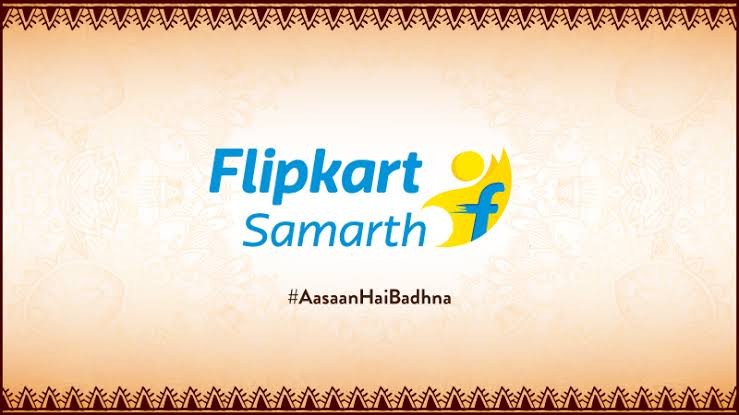
(Flipkart Samarth | Photo Credit: flipkart.in)
On the global stage, ODOP crafts are now being showcased at international trade fairs and G20 exhibitions, opening new markets for traditional artisans. For example, Bastar’s Dokra figurines and Varanasi silk products have recently been featured at overseas expos and won appreciation and orders. By providing the tribal artisans access not just to local haats but also to global marketplaces, the government and district administrations are transforming age-old crafts into engines of growth.
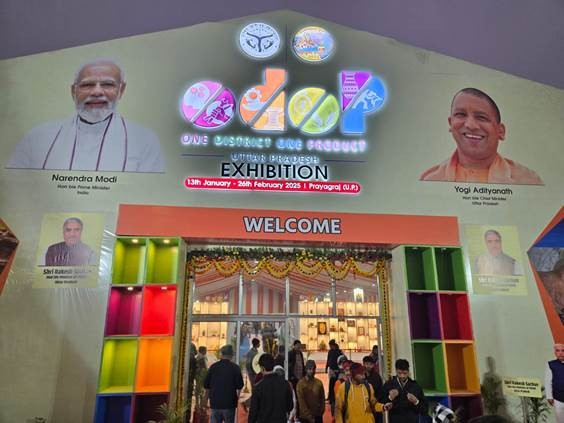
(ODOP Exhibition | Image Source: pib.gov.in)
On the global stage, ODOP crafts are now being showcased at international trade fairs and G20 exhibitions, opening new markets for traditional artisans. For example, Bastar’s Dokra figurines and Varanasi silk products have recently been featured at overseas expos and won appreciation and orders. By providing the tribal artisans access not just to local haats but also to global marketplaces, the government and district administrations are transforming age-old crafts into engines of growth.
ODOP and India’s Sustainable Development Goals: Crafting an Atmanirbhar Bharat

(Sustainable Development Goals| Image Source:worldgbc.org)
As ODOP products gain visibility in domestic and global markets they are directly contributing to India’s Sustainable Development Goals (SDGs) such as
– eradicating poverty (SDG 1)
– creating decent work (SDG 8)
– building sustainable communities (SDG 11).
Every district that revives a craft under ODOP is not only protecting its cultures and tradition but also paving the way for an Atmanirbhar Bharat.
In celebrating these handicrafts we celebrate the resilience of artisans, the foresight of government and the efforts of district administrators who stand as the backbone of this movement. ODOP is proving that when governance, community, and culture align the result is nothing less than remarkable.


